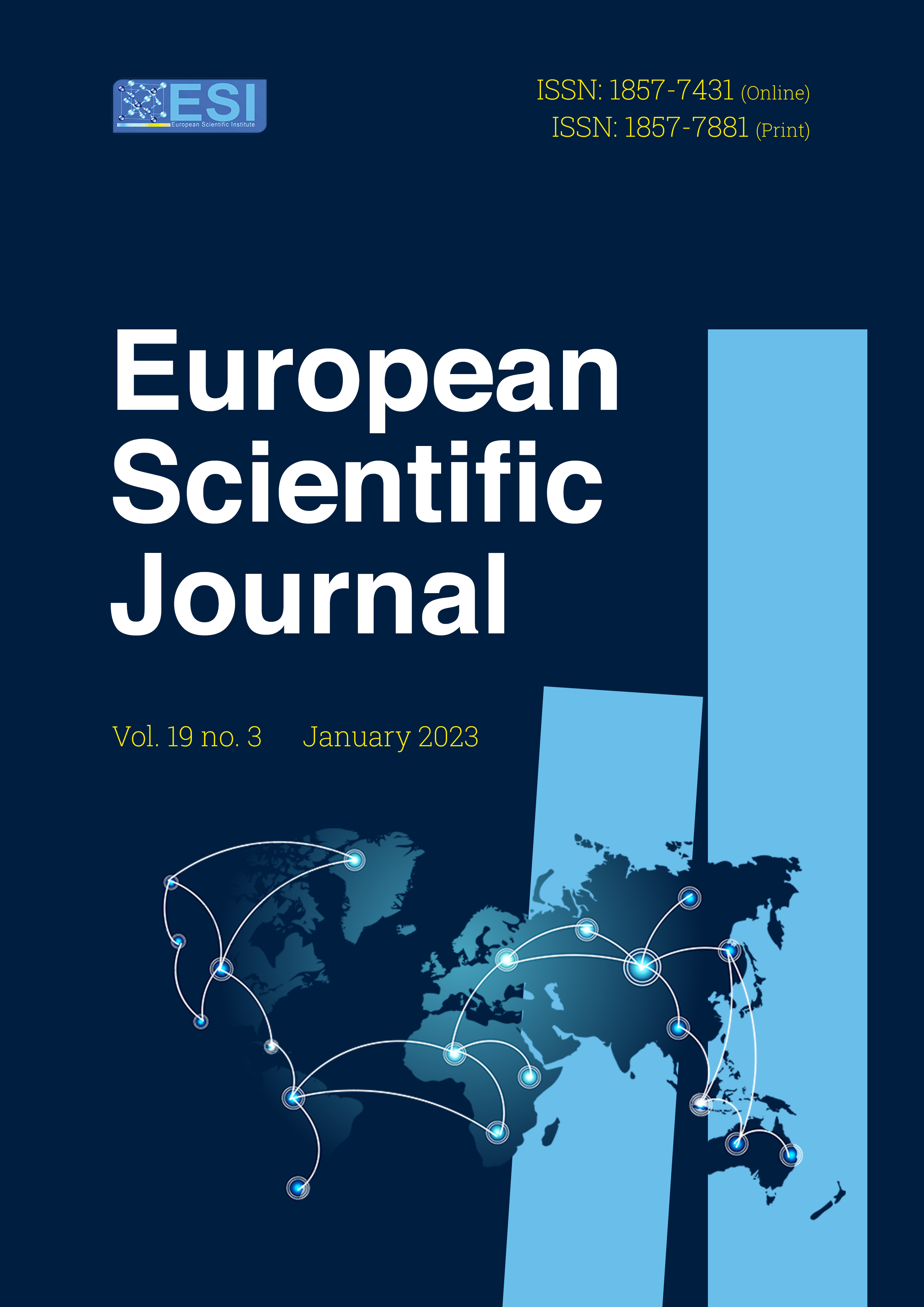Knowledge, Attitude, and Practice of Academic Students about STIs and HIV/AIDS at the University of Fianarantsoa: A Cross-Sectional Study
Abstract
Introduction: Sexually transmitted infections (STIs) facilitate and increase the risk of HIV transmission. This paper focuses on evaluating the knowledge, attitude, and practice of academic students about sexually transmitted infections and HIV at the university of Fianarantsoa. Materials: An analytical cross-sectional study was conducted among the students at the Andrainjato University. Knowledge was assessed using a score of one point for each correct answer. Results: 1035 students were included and 67.7% (n=701) had good knowledge about STIs and HIV/AIDS. The sexual transmission (83.9%; n=868) was the most commonly known. On multivariate analysis, being a student at the faculty of medicine (p<0.001, aOR 137.3 [19.1-988]), faculty of Letters (p<0.001, aOR 4.5 [2.8-7.2)]), or the Normal Graduate School (NGS) (p<0.001, aOR 6.7 [3.3-13.7]), being tested for HIV before (p= 0.002, aOR 1.6 [1.2-2.2]), constituted the major factor of good knowledge about sexual infections. Majority (71.8%, n=743) have had sexual intercourse before, and the median age of their first sexual activities was 18 years (17-20). The use of Condom (44.4%, n=460) was the most practiced STIs prevention method. This is followed by fidelity (19.8%; n=205) and abstinence (11.4%, n=118). Among the students, 29.3% (302) had high-risk sexual behavior during the last three months. Conclusion: The proportion of academic students with good knowledge of STIs and HIV was not satisfying. There was also discordance between the knowledge of STIs prevention and the daily university practice of the students.
Downloads
Metrics
PlumX Statistics
References
2. Anwar, M. et al. (2010). Awareness of school students on sexually transmitted infections (STIs) and their sexual behavior : A cross-sectional study conducted in Pulau Pinang, Malaysia. BMC Public Health, 10(1), 47. https://doi.org/10.1186/1471-2458-10-47
3. Caetano, M. E. et al. (2010). Sexual behavior and knowledge of sexually transmitted infections among university students in Sao Paulo, Brazil. International Journal of Gynecology & Obstetrics, 110(1), 43‑46. https://doi.org/10.1016/j.ijgo.2010.02.012
4. Cohen, M. S. et al. (2011). Prevention of HIV-1 Infection with Early Antiretroviral Therapy. New England Journal of Medicine, 365(6), 493‑505. https://doi.org/10.1056/NEJMoa1105243
5. Determinants of knowledge on sexually transmitted infections among students in public higher education institutions in Melaka state, Malaysia. (2020). PLOS ONE, 15(10), e0240842. https://doi.org/10.1371/journal.pone.0240842
6. DiClemente, R. J. et al. (2009). Efficacy of Sexually Transmitted Disease/Human Immunodeficiency Virus Sexual Risk–Reduction Intervention for African American Adolescent Females Seeking Sexual Health Services : A Randomized Controlled Trial. Archives of Pediatrics & Adolescent Medicine, 163(12), 1112‑1121. https://doi.org/10.1001/archpediatrics.2009.205
7. Eaton, J. W. et al. (2014). Health benefits, costs, and cost-effectiveness of earlier eligibility for adult antiretroviral therapy and expanded treatment coverage : A combined analysis of 12 mathematical models. The Lancet. Global Health, 2(1), e23-34. https://doi.org/10.1016/S2214-109X(13)70172-4
8. Effectiveness of Mass Media Interventions for HIV Prevention... : JAIDS Journal of Acquired Immune Deficiency Syndromes. (s. d.). Consulté 12 janvier 2022, à l’adresse https://journals.lww.com/jaids/fulltext/2014/08151/effectiveness_of_mass_media_interventions_for_hiv.13.aspx
9. Harms, G. et al. (1994). Pattern of sexually transmitted diseases in a Malagasy population. Sexually Transmitted Diseases, 21(6), 315‑320. https://doi.org/10.1097/00007435-199411000-00004
10. Kassie, B. A. et al. (2019). Prevalence of sexually transmitted infections and associated factors among the University of Gondar students, Northwest Ethiopia : A cross-sectional study. Reproductive Health, 16(1), 163. https://doi.org/10.1186/s12978-019-0815-5
11. Leutscher, P. et al. (2005). Sexually Transmitted Infections in Rural Madagascar at an Early Stage of the HIV Epidemic : A 6-Month Community-Based Follow-Up Study. Sexually Transmitted Diseases, 32(3), 150‑155.
12. Oladepo, O. & Brieger, W. R. (1994). AIDS knowledge, attitude and behaviour patterns among university students in Ibadan, Nigeria. African Journal of Medicine and Medical Sciences, 23(2), 119‑125.
13. Over, M. & Piot, P. (1991). HIV infection and sexually transmitted diseases. Population, Health and Nutrition Division, Population and Human Resources ….
14. Plummer, F. A. et al. (1991). Cofactors in Male-Female Sexual Transmission of Human Immunodeficiency Virus Type 1. The Journal of Infectious Diseases, 163(2), 233‑239. https://doi.org/10.1093/infdis/163.2.233
15. Romer, D. et al. (2009). Mass Media as an HIV-Prevention Strategy : Using Culturally Sensitive Messages to Reduce HIV-Associated Sexual Behavior of At-Risk African American Youth. American Journal of Public Health, 99(12), 2150‑2159. https://doi.org/10.2105/AJPH.2008.155036
16. Samkange-Zeeb, F. N., Spallek, L., & Zeeb, H. (2011). Awareness and knowledge of sexually transmitted diseases (STDs) among school-going adolescents in Europe : A systematic review of published literature. BMC Public Health, 11(1), 727. https://doi.org/10.1186/1471-2458-11-727
17. Severe, P. et al. (2010). Early versus Standard Antiretroviral Therapy for HIV-Infected Adults in Haiti. New England Journal of Medicine, 363(3), 257‑265. https://doi.org/10.1056/NEJMoa0910370
18. Sexually transmitted infections (STIs). (s. d.). Consulté 3 avril 2022, à l’adresse https://www.who.int/news-room/fact-sheets/detail/sexually-transmitted-infections-(stis)
19. Sobze, M. S. et al. (2017). Youth Awareness on Sexually Transmitted Infections, HIV and AIDS in Secondary Schools in the Dschang Municipality (Cameroon) : The Mobile Caravan Project. Journal of Public Health in Africa, 7(2), 614. https://doi.org/10.4081/jphia.2016.614
20. Visalli, G. et al. (2019). Knowledge of sexually transmitted infections and risky behaviours : A survey among high school and university students. Journal of Preventive Medicine and Hygiene, 60(2), E84‑E92. https://doi.org/10.15167/2421-4248/jpmh2019.60.2.1079
21. Zizza, A. et al. (2021). Knowledge, Information Needs and Risk Perception about HIV and Sexually Transmitted Diseases after an Education Intervention on Italian High School and University Students. International Journal of Environmental Research and Public Health, 18(4), 2069. https://doi.org/10.3390/ijerph18042069
Copyright (c) 2023 Andriamizaka Johary Andriamamonjisoa, Radovololona Rakotomalala, Volatiana Andriananja, Mihaja Raberahona, Faramalala Randriamampionona, Radonirina Lazasoa Andrianasolo, Mamy Jean de Dieu Randria, Rivonirina Andry Rakotoarivelo

This work is licensed under a Creative Commons Attribution-NonCommercial-NoDerivatives 4.0 International License.








